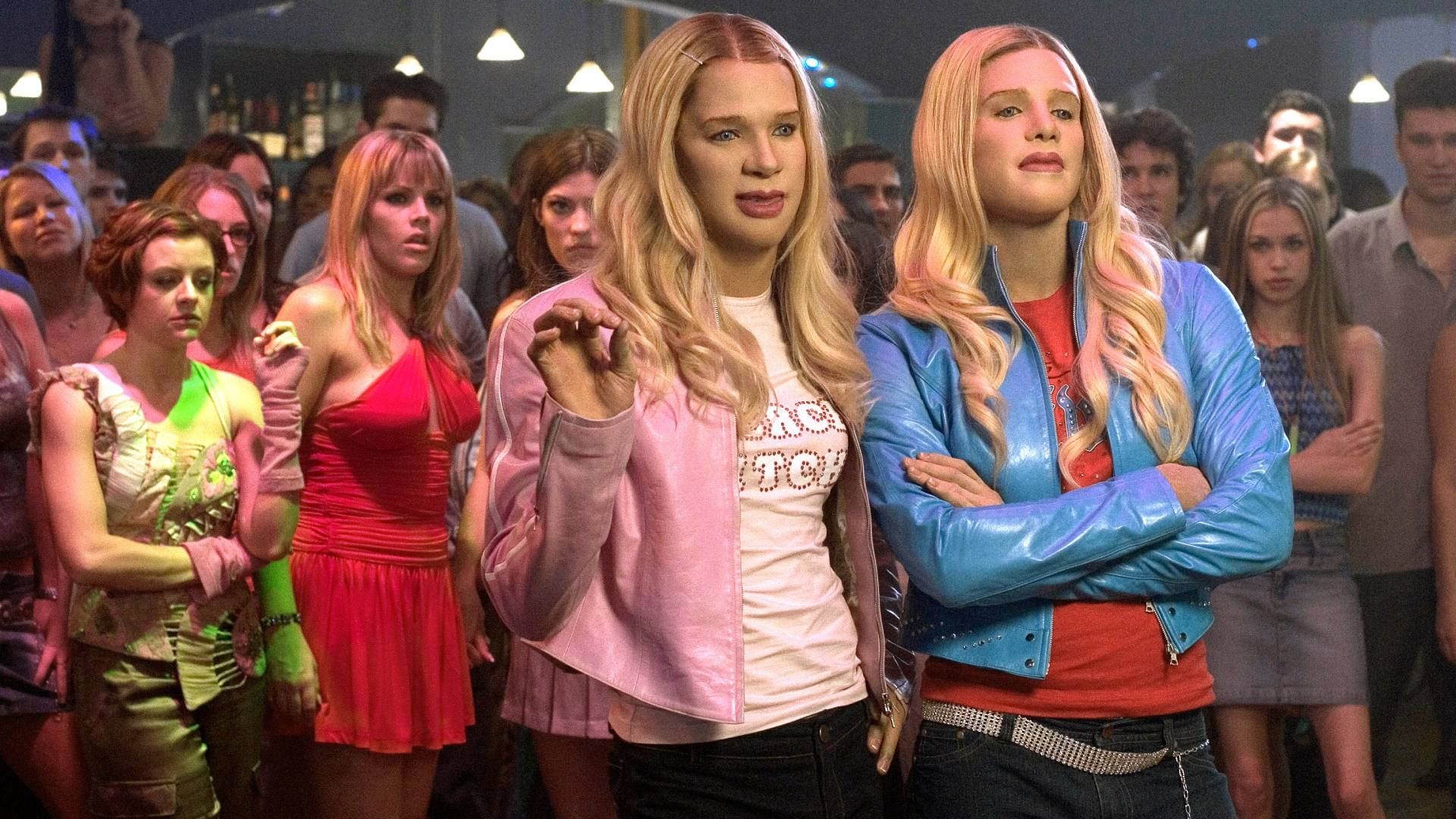Let’s talk about something that’s been buzzing around in media, pop culture, and social discussions—topics related to white chicks. Now, before we dive deep, let’s set the tone: this article is all about understanding diversity, representation, and cultural nuances. It’s not about stereotypes or generalizations but rather about unpacking the complexities of societal norms and how they shape our perceptions.
We’re living in a world where diversity is celebrated, yet there’s still a long way to go when it comes to true inclusivity. Topics related to white chicks, or more broadly, white women, often spark conversations about privilege, beauty standards, and cultural dynamics. It’s a conversation that needs to happen, and we’re here to break it down for you in a way that’s both informative and easy to digest.
This article isn’t just about pointing fingers or making assumptions. It’s about exploring the cultural, historical, and social contexts that influence how white women are portrayed in media, relationships, and everyday life. So, grab a cup of coffee, get comfy, and let’s dive into the nitty-gritty of what it means to discuss topics related to white chicks.
Read also:Kate Dries Partner The Ultimate Guide To Her Life Career And Love Story
Defining the Term: What Does "White Chicks" Really Mean?
Let’s start with the basics. When we talk about white chicks, we’re referring to white women, typically in a casual or colloquial context. The term itself can carry different connotations depending on the setting and intent. For some, it might evoke images of privilege and beauty standards, while for others, it could simply be a descriptor without deeper meaning.
In today’s world, language matters. Words have power, and how we use them can shape perceptions. That’s why it’s important to approach this topic with sensitivity and nuance. We’re not here to judge or label but to understand the context in which these terms are used and the impact they have on society.
Some key points to consider:
- The term "white chicks" is often used in pop culture and media to describe white women.
- It can carry both positive and negative connotations, depending on the context.
- Understanding the cultural and social implications of such terms is crucial for fostering meaningful conversations.
The Role of White Women in Media
White women have long been at the forefront of media representation, shaping beauty standards, fashion trends, and societal norms. From Hollywood blockbusters to magazine covers, their presence has been dominant in the entertainment industry. But what does this mean for diversity and inclusivity?
While white women have had significant representation in media, it’s important to recognize the impact this has on other groups. The overrepresentation of one demographic can overshadow the voices and stories of others, leading to a lack of diversity in media narratives.
Breaking Down Beauty Standards
Beauty standards have long been dictated by white women, with features like fair skin, blonde hair, and blue eyes often being idealized. However, these standards are slowly evolving as more diverse voices enter the conversation. Brands and media outlets are beginning to embrace a broader definition of beauty, showcasing women of all races, ethnicities, and body types.
Read also:Kountry Wayne Siblings A Closer Look At The Family Behind The Viral Sensation
Some statistics to consider:
- According to a study by the Representation Project, white women make up over 70% of lead roles in Hollywood films.
- Only 20% of major film releases feature non-white lead actresses.
Stereotypes and Misconceptions
Stereotypes about white women abound, from the "dumb blonde" trope to the "privileged white girl" narrative. These stereotypes can be harmful, perpetuating negative perceptions and reinforcing existing biases. It’s important to challenge these stereotypes and recognize the diversity within any group.
Challenging the "Dumb Blonde" Trope
The "dumb blonde" stereotype is one of the most pervasive myths about white women. It’s a trope that has been used in media for decades, often as a source of comedic relief. However, this stereotype is not only inaccurate but also damaging. It undermines the intelligence and capabilities of women who happen to have blonde hair.
Fun fact: Many successful women, including business leaders, scientists, and artists, defy this stereotype every day. It’s time to move beyond outdated notions and celebrate the achievements of all women, regardless of their hair color.
Relationships and Cultural Dynamics
When it comes to relationships, topics related to white chicks often revolve around cultural dynamics and compatibility. From interracial relationships to cultural exchanges, the role of white women in global relationships is a fascinating area of study.
Interracial Relationships: Breaking Barriers
Interracial relationships have become more common in recent years, challenging traditional norms and breaking down cultural barriers. White women are often at the forefront of these relationships, navigating the complexities of cultural differences and building bridges between communities.
Some interesting stats:
- According to the Pew Research Center, interracial marriages in the U.S. have more than doubled since 1980.
- White women are among the most likely to marry outside their race, with Asian and Hispanic partners being the most common.
The Intersection of Privilege and Representation
Privilege is a topic that can’t be ignored when discussing white women. While not all white women experience privilege in the same way, systemic advantages do exist. It’s important to acknowledge these privileges and use them as a platform for change, advocating for greater representation and inclusivity.
Using Privilege for Good
Many white women are using their platforms to amplify marginalized voices and promote social justice. From activism to philanthropy, they’re making a difference in communities around the world. It’s a powerful reminder that privilege, when used responsibly, can be a force for good.
Cultural Appropriation vs. Appreciation
Cultural appropriation is a sensitive topic that often comes up in discussions about white women and their interactions with other cultures. While borrowing elements from other cultures can be a form of appreciation, it’s important to do so respectfully and with an understanding of the cultural significance.
Respecting Cultural Boundaries
White women, like anyone else, should approach other cultures with respect and curiosity. This means learning about the history and significance of cultural practices before adopting them. It’s about celebrating diversity without erasing the origins of these practices.
Representation in Fashion and Beauty
Fashion and beauty are industries where white women have traditionally held significant influence. From runway shows to beauty campaigns, their presence has shaped trends and set standards. However, the industry is evolving, and more diverse voices are being heard.
The Rise of Inclusivity
Brands are increasingly embracing inclusivity, featuring models of all races, sizes, and backgrounds in their campaigns. This shift is not only good for business but also for promoting a more accurate representation of beauty.
Social Media and Online Representation
Social media has become a powerful tool for representation, allowing women of all backgrounds to share their stories and connect with others. White women, like others, are using platforms like Instagram and TikTok to showcase their talents and promote diversity.
Building Inclusive Communities
Many white women are using their social media presence to build inclusive communities, amplifying the voices of marginalized groups and promoting equality. It’s a movement that’s gaining momentum and making a real difference in the digital world.
Conclusion: Moving Forward with Understanding
In conclusion, topics related to white chicks are complex and multifaceted, touching on issues of representation, privilege, and cultural dynamics. By approaching these topics with sensitivity and nuance, we can foster meaningful conversations that promote understanding and inclusivity.
We encourage you to share your thoughts and experiences in the comments below. Let’s continue the conversation and work towards a more inclusive and equitable world. And don’t forget to check out our other articles for more insights and perspectives!
Thanks for reading, and remember: it’s all about breaking down barriers and building bridges. Keep it real, keep it human, and keep it moving forward!
Table of Contents
- Defining the Term: What Does "White Chicks" Really Mean?
- The Role of White Women in Media
- Stereotypes and Misconceptions
- Relationships and Cultural Dynamics
- The Intersection of Privilege and Representation
- Cultural Appropriation vs. Appreciation
- Representation in Fashion and Beauty
- Social Media and Online Representation
- Conclusion: Moving Forward with Understanding


